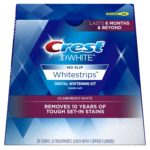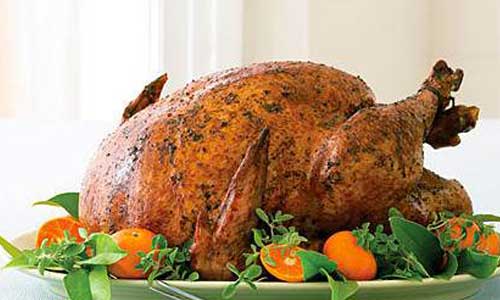Smile Design 101: How Cosmetic Dentistry Can Transform Your Confidence in Albuquerque
A Brighter Smile, A Brighter You
Your smile is one of the most powerful tools you have. It communicates joy, builds connections, and sets the tone for first impressions. Yet, if you feel dissatisfied with your smile, those pivotal moments can turn into sources of stress. Many people in Albuquerque share concerns over imperfections like discoloration, chipped teeth, or spacing issues, but cosmetic dentistry offers a solution.
At Davis Gribble Hollowwa Dental, we prioritize creating confident, radiant smiles. Whether you're seeking subtle enhancements or a complete makeover, advances in cosmetic dentistry ensure personalized treatments that deliver stunning results. Imagine greeting the world with a smile that reflects the best version of you!
Cosmetic Dentistry Enhances Your Confidence
When you love your smile, it shows. Feeling good about your teeth allows you to speak, laugh, and engage freely without holding back. Everyone deserves that kind of comfort, but issues like stained, crooked, or damaged teeth often chip away at confidence. Cosmetic dentistry addresses these concerns and helps individuals regain their self-esteem.
For instance, teeth whitening can restore the brilliance of enamel that has been dulled by years of drinking coffee, wine, or tea. Veneers can conceal chips, cracks, and gaps, transforming your smile into a seamless beauty that feels just as natural as it looks. Clear aligners can discreetly straighten teeth, sparing you from bulky traditional braces while delivering remarkable results.
These transformations significantly impact self-confidence. When walking into a room no longer feels daunting or when smiling for photos becomes an everyday joy, you realize how important your smile is. Many of our Albuquerque patients report an immediate shift in their self-esteem after these treatments. Cosmetic dentistry doesn’t just change your smile; it changes how you feel about yourself.
Confidence in Every Aspect of Life
Think about the difference a confident smile could make during a job interview, first date, or public speaking engagement. Your facial expressions often set the tone in professional and personal environments. With a confident, radiant smile, you project openness and trustworthiness, leaving lasting impressions on those you meet.
Improving Oral Health, One Smile at a Time
Cosmetic dentistry often carries a dual benefit. While it enhances appearances, many procedures can also improve long-term oral health. For instance, correcting the alignment of teeth with clear aligners eliminates overcrowded spaces or gaps where plaque tends to collect. By addressing these spaces, patients can create an oral environment that supports more effective brushing and flossing, reducing the likelihood of cavities and gum disease.
Veneers, often sought for aesthetic reasons, also offer protection for weakened or damaged teeth. Porcelain veneers act as a shield, preventing chips or cracks from worsening. Similarly, crowns restore form and function to teeth weakened by decay or injury, allowing patients to chew and speak without discomfort. These restorative features contribute to an improved quality of life for patients beyond the cosmetic benefits.
Clear Aligners and Total Health Benefits
Misaligned teeth affect more than just appearance. Tooth and jaw misalignment can lead to uneven wear on teeth, headaches, and even issues with the temporomandibular joint (TMJ). Aligning teeth properly supports a balanced bite, reducing these risks. Clear aligner therapy offers a nearly invisible alternative to traditional braces, making teeth-straightening a comfortable and discreet process.
Patients often notice reduced strain on their jaws, increased ease in chewing, and even improved speech clarity after completing an orthodontic treatment. Beyond the smile itself, these treatments reinforce overall dental function and health.
Why Cosmetic Dentistry is Cost-Effective Long Term
The costs of cosmetic dentistry often deter people initially, but it’s essential to view these treatments as an investment in both your confidence and your dental health. For example, fixing a chipped tooth with bonding now can prevent further damage that might require a costly root canal or extraction later on. Addressing discoloration with teeth whitening helps reinforce better oral hygiene habits, as patients often take greater care to maintain the results.
Straightening teeth with clear aligners isn't just aesthetically pleasing. TAligner treatment can also prevent costly repairs caused by uneven tooth wear. Similarly, veneers provide a long-term solution as they enhance appearance and strengthen teeth to minimize the risk of fractures. Investing in your smile today often leads to fewer expensive dental interventions in the future, while also giving you the immediate benefits of a beautiful, functional smile.
Think About Long-Term Value
Imagine spending years feeling self-conscious about your smile. That sense of insecurity can hold you back in professional opportunities, personal relationships, and even casual social interactions. Cosmetic dentistry provides a way to unlock your full potential by investing in yourself. While it’s challenging to assign a monetary value to self-assurance, many patients agree that the cost of their renewed smile is priceless.
Frequently Asked Questions About Cosmetic Dentistry
What types of cosmetic dentistry are available?
Cosmetic dentistry offers several procedures tailored to your needs:
- Teeth Whitening: Brightens teeth by removing stains, often in just one office visit.
- Veneers: Thin porcelain shells are attached to the front of teeth, correcting flaws such as chips or gaps.
- Crowns: Restores teeth by covering damaged areas, blending health with beauty.
- Dental Bonding: Repairs minor imperfections, such as chips, using tooth-colored resin.
- Clear Aligners: Straightens teeth with custom trays for a discreet solution.
- Smile Makeovers: A combination of treatments designed to transform your smile completely.
Each treatment works uniquely to address specific issues. During a consultation, your dentist will discuss your goals for your smile and match you with the procedures that best fit.
How long do results last?
The longevity of your results depends on the procedure and your oral hygiene habits. For example, teeth whitening typically lasts several months to a year with proper care, while veneers can last a decade or more with proper maintenance. Regular dental check-ups and good oral care extend the lifespan of any cosmetic treatment.
Elevate Your Smile Today
Your smile deserves to reflect your unique personality and joy. When it doesn’t, cosmetic dentistry offers the tools to transform it into a source of pride and happiness. Your teeth should work for you, enhancing your confidence and health with every smile you share. We customize care to align with your goals, ensuring a natural, beautiful result designed just for you.
Whether you're an Albuquerque resident in need of minor touch-ups or a complete smile makeover, our expert team stands ready to help. Begin your journey to a life-changing smile today. Make an appointment with us to explore treatments that brighten your day and improve your oral health long term.
At Davis Gribble Hollowwa Dental, we take pride in serving Albuquerque with compassionate, skilled care. Contact us today to schedule your consultation and take the first step toward your dream smile!




